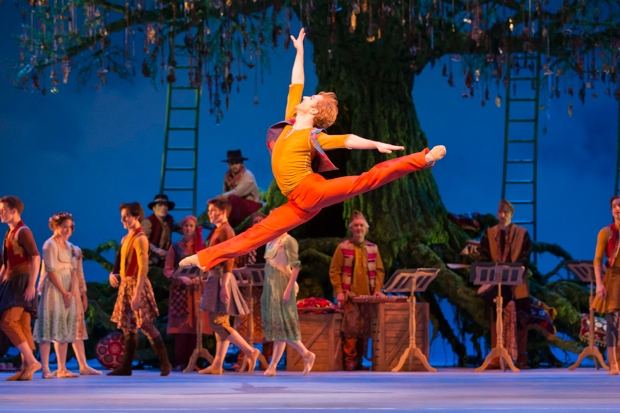In a dance world that has chosen to dispense with stylistic and semantic subtleties, ‘narrative ballet’ and ‘story ballet’ are often used as synonymous. Yet there are differences — and major ones at that. In a ‘narrative ballet’ it is the choreography that carries the story. Each movement idea is thus conceived in relation to the dramatic demands of the thread and charged with meaning. This is, at least, what the genre’s forefathers recommended back in the 18th century, and what most major dance-makers through history strive to do.
A story ballet, on the other hand, mirrors and tackles the basic needs of an immediate, directly accessible and even naive story-telling that is at the core of today’s culture. In story ballets, therefore, the plot provides the backbone to some visually enjoyable dancing, the construction of which does not need to relate to the dramatic make-up of the whole tale.
A few more differences surface when works based on a pre-existing text are taken into account. In narrative ballets, fidelity to the original text is not paramount, for what matters is the way the text’s essence is evoked. Story ballets, on the contrary, tend to be an often exasperatingly naive adaptation of every proverbial chapter and verse.
The Winter’s Tale, Christopher Wheeldon’s latest foray into story-telling theatre dance, sits, somewhat uncomfortably, between these two categories. According to an interview in the programme, Wheeldon went for Shakespeare’s ‘problematic play’ because he believes that the Bard had a unique hand at devising interesting plots. Alas, contrary to what this interview maintains, the plot cannot easily be detached from the Bard’s ‘words’. Stripped of its memorable lines, the threadbare story ends up becoming dangerously close to a soap opera, particularly when so much of the narrative is carried on through symbolic and, at times not so symbolic, gestures.
Gestural language, whether it be metaphorical or traditional-looking mime, is not one of Wheeldon’s strengths, I have to say. The same could be said of those steps and choreographic ideas that ought to express strong emotions and feelings, at least judging by the lack of choreographic ingenuity that characterised them. Don’t get me wrong: there are some spectacular, typically Wheeldon dance moments and instances in which the interpreters showcase their dramatic talents. It’s a pity that they are thwarted by endless stretches of not so exciting, and often dramaturgically redundant choreography.
Most of the first act resembled one of the old Soviet ballets, packed with an overwhelming amount of anachronistic-looking sensational poses and overdramatic steps. In Act II things got slightly better, even though the seemingly endless and repetitive dancing for the happy Bohemians brought back memories of the days in which the corps were used only for ornamental purposes.
The stellar cast — Lauren Cuthbertson, Zenaida Yanowsky, Sarah Lamb, Edward Watson, Federico Bonelli, Steven McRae, Valentino Zucchetti — did their best to make everything credible, but the often two-dimensional characterisation of their roles did not help them much. I believe I am not the only one who thought that some drastic pruning and editing could turn this work into a much more engaging and potentially resplendent one, in line with the great narrative tradition of British ballet-making.
Still, Wheeldon is a man of the theatre and knows how to impress audiences. The choreographic construct might be uneven, but there is spectacle — thanks particularly to Bob Crowley’s designs, some great theatrical effects by Daniel Brodie and Basil Twist, the lighting design of Natasha Katz and Joby Talbot’s new score.






Comments